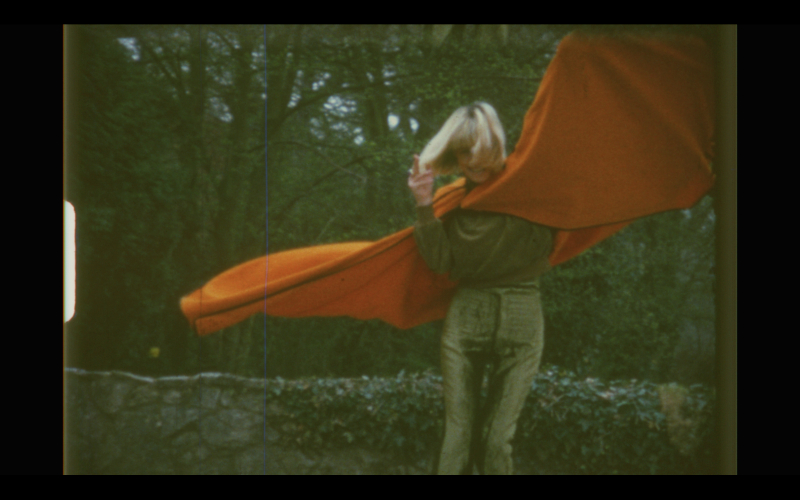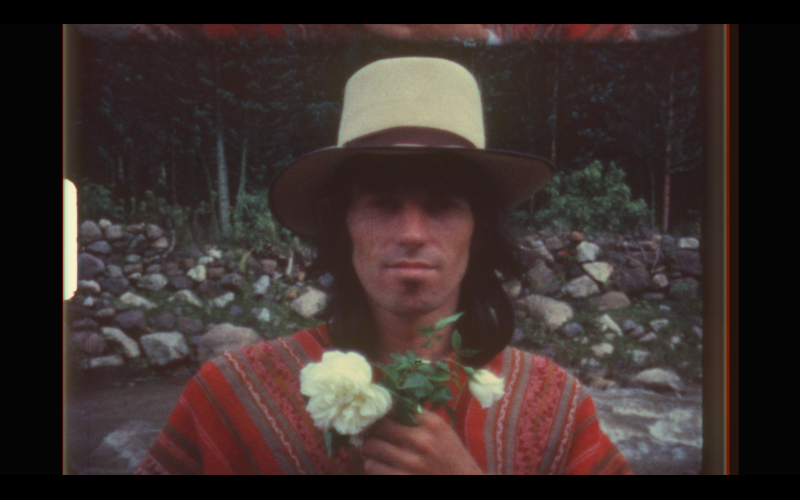Directors – Alexis Bloom, Svetlana Zill – 2023 – US – Cert. 15 – 113m
***1/2
The chaotic life of the archetypal rock chick, told through her own words and those of her children – out in UK cinemas on Friday, May 17th
After her death in 2017, Anita Pallenberg’s two surviving children Marlon and Angela discovered a manuscript; she had written an autobiography. Marlon worked his way through it as part of his bereavement process and was so taken with the articulate text that he sought out producers to turn it into a film. (He is one of the film’s executive producers himself, while both directors are credited as among the producers). Numerous clips from an interview with him are used in this resultant documentary, along with excerpts from Anita’s manuscript voiced by an actress, along with interview footage with Angela and verbal audio from Rolling Stones band member Keith Richards, Anita’s partner for a decade and the father of her children.
Like many of the young generation who rose meteorically to cultural prominence in the swinging sixties, Anita Pallenberg was a war baby. Her first years were accompanied by the sound of falling bombs; as she puts it, she didn’t learn to walk, but to run. The instability of her early years must have left its mark; she grew up a rebel, dropped out of school and, at age 19, headed to New York in 1963. From there, she embarked on a modelling career which took her all over the world and would later land her roles in movies, notably Barbarella (Roger Vadim, 1963) in which she played the scantily dressed, evil tyrant, and the controversial Performance (Nic Roeg, Donald Cammell, 1970). Volker Schlöndorff, who directed her in Man on Horseback / Michael Kohlhaas – der Rebell (1969), reminisces warmly about her.
In Germany, she attended a Rolling Stones concert so out of control that members of the band were forced to leave the stage. Dared by a friend to kidnap a Rolling Stone, she made her way into their entourage and ended up in a relationship with band member Brian Jones, moving into his flat in London. Both she and Brian had blonde hair and faces suggestive of childlike innocence; visually, they looked made for one another.

She started doing acid and, realising that either her drug-taking or her modelling career would have to go, dropped the modelling. She was never a driven worker, but got away with that by being fiercely intelligent and possessing wide cultural knowledge. Her relationship with Brian hit problems due to his sudden rages. When Anita, Brian and fellow band member Keith Richards travelled by car to Tangier, Brian fell sick on the way and to Richards’ surprise, rather than stay with him in the hospital she accompanied him to their destination, where they spent a night together.
Following Jones’ tragic death in 1969, she and Richards moved in together, she found herself in his house in the South of France where, during the recording of what was to become the Stones’ album Exile on Main Street, the mostly male entourage numbered twenty or thirty. As the sole French-speaking person, she ended up having to organise the catering and day-to-day running of the household. As the 1970s wore on, Keith would often be away on tour – he prioritised his music over everything else, including family – but the couple had three children. The third Tara died due to crib death aged 10 weeks, at which point their nan took the kids away from their mother, with Marlon being sent to upstate New York and Angela to England.
Further calamity followed in 1979 when a house guest of Anita’s shot himself in the head, emulating the roulette scene in The Deer Hunter (Michael Cimino, 1978). Because of the household’s drug abuse, Marlon had been taught to tidy away anything that might constitute incriminating evidence before the arrival of police or other authorities, and that instinct kicked in here. Anita, meanwhile, responded by going deeper into a heroin addiction. In later years, however, she managed to turn her life around, attending art school and being befriended by model Kate Moss, who talks to camera about Pallenberg being “the original rock chick” and Kate’s own personal style icon.

Anita’s words and all this interview footage is augmented by a some considerable volume of the family’s Super 8 home movie archive. At the end of the film, the actress who read Anita’s own words is revealed to be Scarlett Johansson. Directors Bloom and Zill have very much allowed Marlon to be the guiding force in this film: although much use is made of his mother’s words, it feels very much like his take on her. There is far less of the interview footage with Angela than with him, and some of that feels prompted by Marlon, notably the revelation of her birth name Dandelion, which she never uses, Angela being her middle name.
It would be easy to take a moralising route and condemn Anita for her lifestyle choices, however Marlon never takes this approach. He is more interested in putting a picture of his mother, warts and all, on the screen. She clearly wasn’t perfect, yet is presented as a strong-willed woman who somehow managed to survive difficult circumstances and, in the end, get her life together. There is little overall about her very early life or her later life after she and Richards separated, most of the material here covering the Mid-1960s and the whole of the 1970s.
This is being pushed in the publicity blurb as bucking the trend for ‘branded content’ and ‘celebrity bios’, and to an extent, this is true, and it is to be commended for it. And yet, I found myself wishing that rather than just present Anita’s life in its most two turbulent decades, it had attempted to engage with it a bit more as the life portrayed seems to take place in a moral and spiritual vacuum. On the plus side, the interview material is strong, as are Anita’s words, and watching the film, you really feel like you were there. Perhaps that was the intention.
Catching Fire: The Story of Anita Pallenberg is out in cinemas in the UK on Friday, May 17th.
Trailer:
